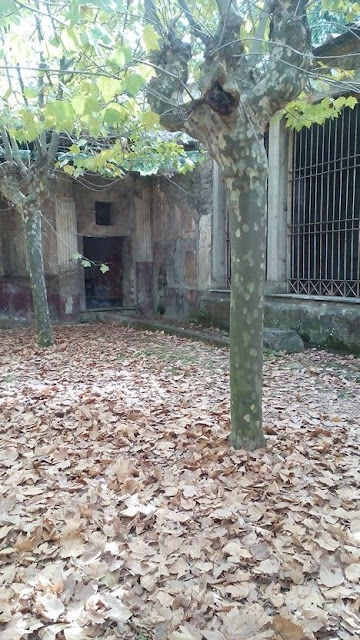The Battle of Hastings was fought on 14 October 1066 between the Norman-French army of Duke William II of Normandy and an English army under the Anglo-Saxon King Harold Godwinson. The battle was the beginning the Norman conquest of England.
La battaglia di Hastings ebbe luogo il 14 Ottobre del 1066 tra l'esercito del duca Guglielmo di Normandia e l'esercito Anglo-Sassone comandato da Re Aroldo. La battaglia segno l'inizio della conquista normanna in Inghilterra.
"When the wind blows from the channel, it carries to us the smell of rotting flesh on Senlac Ridge. For days the Bastard's men hace been burying the Norman dead, cursing as they work in the October sun and covering thei faces with cloths against the stench. Many of Harold's men still lie where they fell. Swollen and grotesque, they guard in death that awful piece of ground the could not hold in life"
(From The Wind from Hastings, by Morgan Llywelyn)
“Quando il vento soffia dal Canale, porta con sé l’odore delle carni in putrefazione di Senlac Ridge. Per giorni e giorni gli uomini del Bastardo hanno seppellito i morti normanni, imprecando per tutto quel lavoro sotto il sole di ottobre, e coprendosi il volto con degli stracci per resistere al fetore. Molti uomini di Aroldo giacciono ancora là dove caddero. Gonfi e grotteschi, da morti fissano quello schifoso lembo di terra che non riuscirono a difendere in vita”
(Tratto da Il Vento di Hastings, Morgan Llywelyn, Editrice Nord)
 |
| The Wind of Hastings by Luis Royo |
Harold died on the battlefield. He was killed shot in the eye with an arrow,
Era il 14 ottobre del 1066 e l’Inghilterra si apprestava a cambiare il corso della sua storia. Re Aroldo secondo e ultimo Re degli Anglosassoni verrà sconfitto ad Hastings dall'esercito normanno di Guglielmo il Conquistatore. Il trono d'Inghilterra passa così alla dinastia normanna. Da questo avvenimento in poi il paese non ebbe più, per il resto della storia, alcun tipo di invasione.
Re Aroldo morì nella battaglia stessa in seguito ad una freccia che gli si conficcò nell'occhio.
 |
| The Wind of Hastings by Luis Royo |
In the novel 'The Wind from Hastings', written by Morgan Llywelyn (published in 1978), the protagonist Edyth tells all the most important episodes of her life (childhood in Mercia in the castle of her father, exile in Ireland, the unexpected marriage to the Prince of Wales, and the last years with Harold until the day of the battle that will mark the end of an era).
This is the story of an amazing woman, who loved and married the King of Wales and then the man who would be King of England, only to witness his historic defeat by the light of Halley's Comet.
Edyth di Mercia, la moglie di Aroldo, scompare per sempre il giorno della grande battaglia portandosi con sé gli eredi al trono del Galles e d'Inghilterra. Tra verità e finzione storica nel romanzo ‘Il vento di Hasting’ (pubblicato nel 1978), la scrittrice Morgan Llywelyn ripercorre attraverso il racconto di Edyth tutti gli episodi più significativi della sua vita (l’infanzia in Mercia nel castello del padre, l’esilio in Irlanda, l’inaspettato matrimonio col Principe del Galles, e gli ultimi anni con Aroldo fino al giorno della battaglia che segnerà la fine di un’epoca).
 |
| Harold's death Bayeux Tapestry scene 57 |
La fonte storica più preziosa che documenta l'invasione normanna nell'isola è l’Arazzo di Bayeux, un ricamo ad ago tracciato con fili di lana di nove tinte naturali lungo approssimativamente 70 mt e largo 50 cm costituito da varie pezze di lino (attualmente è esposto al pubblico nel Centre Guillaume-le-Conquérant di Bayeux). Contiene la raffigurazione di 626 personaggi: 250 tra cavalli e muli, 550 animali di ogni genere, 37 edifici, 49 alberi oltre a castelli, chiese, navi, ecc., per un totale di 1500 figure!
"And Edith of the Swan's Neck walked
By the body that she loved.
She chanted litanies for his soul
With a childish, weird lament
That shuddered through the night. The monks
Prayed softly as they went".
The Battlefield of Hastings by Heinrich Heine













